When we think of fibre optics, the first application that comes to mind is connectivity, because thanks to it we are able to work or entertain ourselves on the web in our daily lives. But this technology, which has become affordable over the years, is also the basis of important experiments involving water and hydrogeological risk. Manuel Bertulessi, a researcher at the Department of Civil and Environmental Engineering at Politecnico di Milano, is an expert in this. Ever since his degree thesis, he has been studying how an embankment or a pipe can be ‘sensed’ in order to record its criticality thanks to fibre optics. Hydrogeological risk has always been a topic of interest for him, so much so that he has taken it to the environmental and territorial engineering classes.
“I attended scientific high school, but I did not have clear ideas on how to continue my studies”, Bertulessi explains to Frontiere. “My enlightenment came during an educational trip for the 50th anniversary of the Vajont dam disaster: that tragedy and its dynamics struck me so much that I turned towards engineering for the environment and the territory, focusing in particular on soil protection and the prevention of natural hazards.
While preparing for the Hydrogeological Risk and Civil Protection exam, I became so passionate about this topic that I chose the subject matter for my thesis. I started working on the concept of smart levees, a concept that started in Northern Europe, especially in countries such as the Netherlands, Poland and Germany which has gradually spread all over the world. A smart levee is equipped with different types of sensors that once integrated, are able, thanks to the information collected, to show the state of health of the embankment, both in quiet times but also in the event of exceptional events. Based on this concept, my colleagues and I developed a prototype solution of smart anti-erosion revetment for embankments.
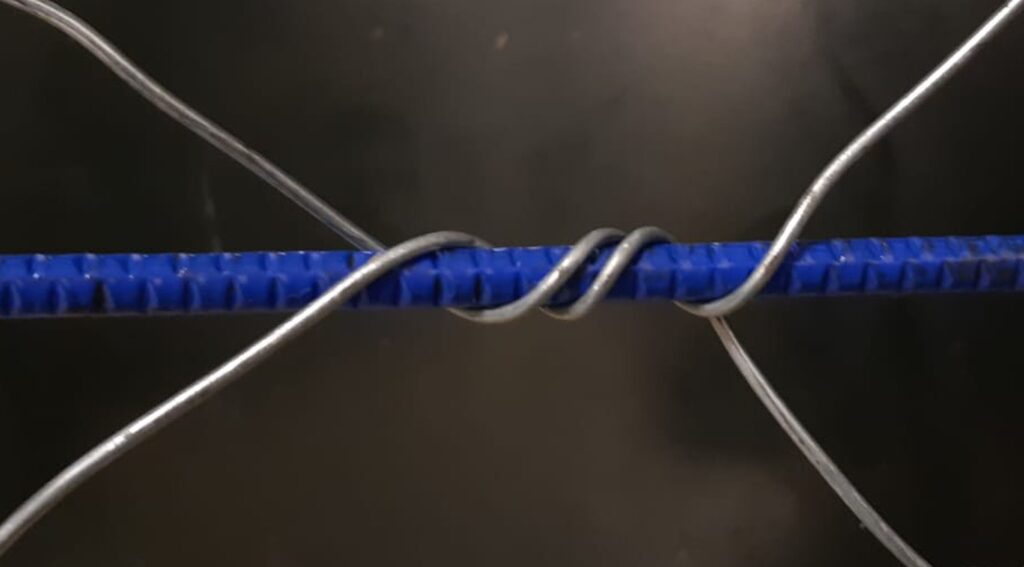
The objective was to integrate fibre-optic sensor cables with geomats reinforced with double-twist wire mesh, in order to create a panel capable of ‘sensing’ embankment deformations related to phenomena such as overflow or local soil instability that can undermine the functionality of the embankment. The thesis work focused precisely on the conceptualisation of a prototype of this technological solution. We did laboratory tests to verify the sensitivity of the optical fibre once integrated with the mesh. At the same time, I conducted analyses with finite element models to reconstruct a digital twin. We always work in this way: we create a digital twin for any structure into which we are going to insert fibre optics, so that then we can have complete mastery over the response of the structure to the various possible stresses and design the layout of the monitoring system accordingly. Subscribe to DeepL Pro to edit this Visit www.DeepL.com/pro for more information. over the response of the structure to different possible stresses and design the layout of the monitoring system accordingly.
Once I graduated, I had the opportunity to continue as a temporary research fellow and then a PhD, with the same research group, that of Professor Giovanni Menduni: during these three and a half years, I worked on the use of fibre optic sensors for monitoring critical hydraulic infrastructure (i.e., embankments), a bridge supporting penstocks serving a hydroelectric plant, canals and pipelines, the latter being one of the latest fields of application that we experimented with”.
Why fibre optics?
“We chose fibre optics over other sensor types for several reasons: the first is that linear sensors fit well with the typical geometry of the infrastructure. By laying and attaching the cable to the structure, you are able to monitor several kilometres of infrastructure with a single element. Second, only the interrogator apparatus needs power. It is the device that sends the optical impulse into the cable and, according to the optoelectronic principle on which the device is based, sees whether and where there has been any deformation or temperature change along the sensor.
Fibre optics is also immune to electromagnetic interference, compared to other sensors. And then it is possible to use the same type of cable as that used for telecommunications, as we did on the conduit bridge in Valle d’Aosta (where we installed more than 400 m with a team of rock-climber workers), which costs a few dozens of cents per metre. In addition, interrogators cost less and less, which makes this technology certainly competitive with other solutions”.
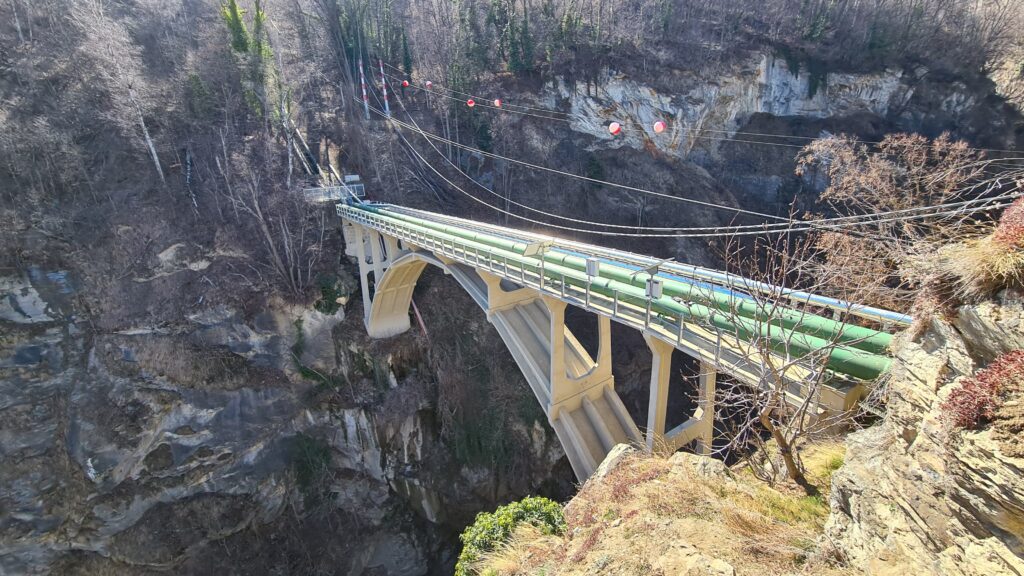
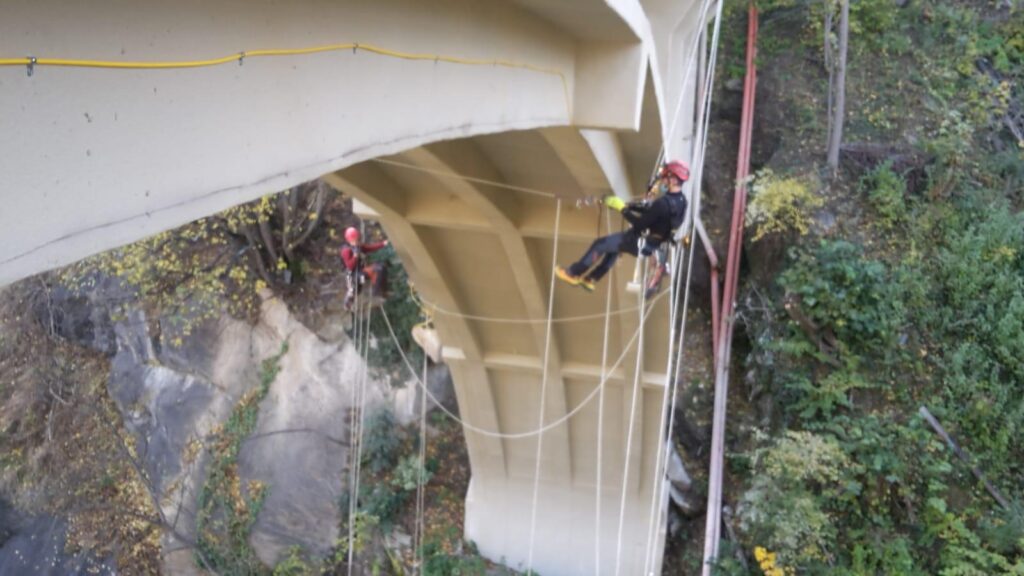
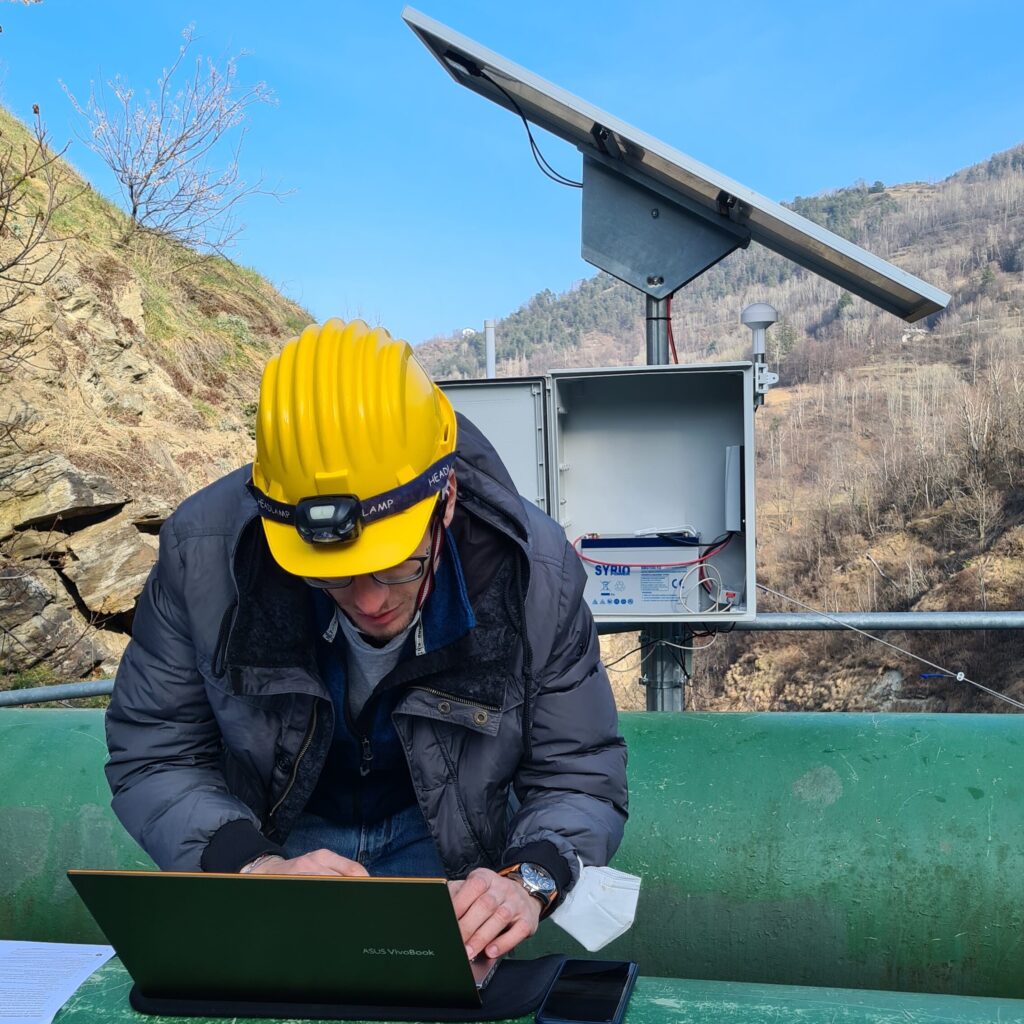
How did you develop the ‘smart levees’?
“Ayear ago, the Emilia-Romagna Region’s Agency for Territorial Safety and Civil Protection funded the experimentation of smart anti-erosion revetments for embankments, in collaboration with both technical-scientific partners, such as the University of Padua, and industrial partners, such as Officine Maccaferri and Optosensing, under overall coordination from Fondazione Politecnico di Milano.
In Modena, we installed an experimental site on the left bank of the Grizzaga stream, a small tributary of the Tiepido river, which in turn flows into the Panaro, one of the most important rivers of the Emilia-Romagna Plain. It is a very important hydraulic junction that suffered several critical situations in the past as this area flooded frequently. The embankment is located in the eastern industrial area of the city, where there are many manufacturing and commercial areas.
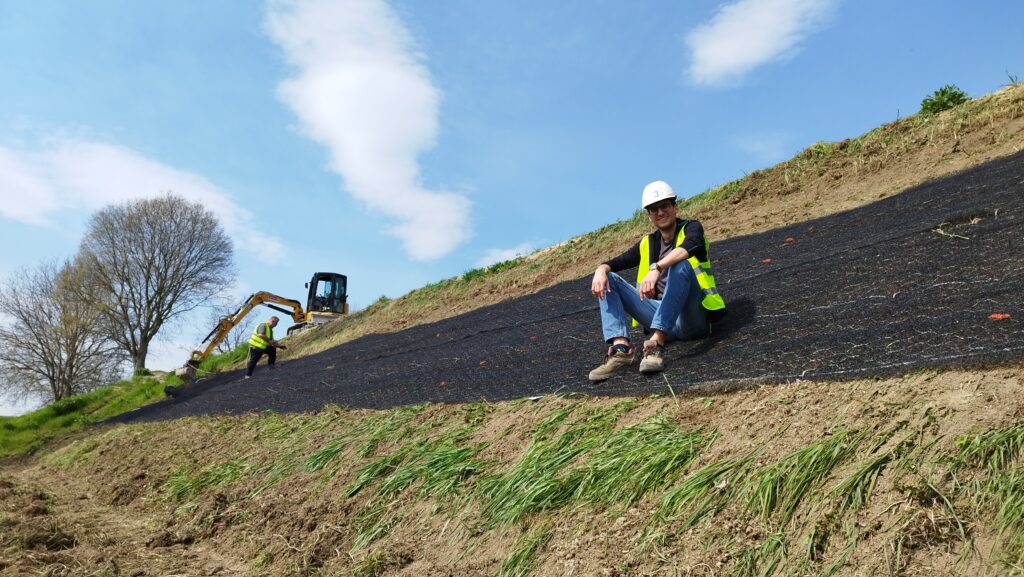
In addition to the structural work on hydraulic safety carried out by the Agency, we were commissioned to install 200 square metres of an initial prototype of smart revetment. The work was preceded by an intensive experimentation phase, where we evaluates what was the best solution to fix the optical fibre to the mesh panel. Together with colleagues from the University of Padua, we then designed this experimental site, where we placed sensors to measure water content and soil temperature, in addition to these revetments. We also designed and installed a mechanical testing system for in-situ revetments, consisting of a set of lifting cushions buried underneath the ground-side revetments.
Once the installation was finished and tested, we had the ‘fortune and misfortune’ to witness two really major flooding events last May. While it is true that the flooding had the worst effects in Romagna, even in the Modena area the rivers reached the warning levels and exceeded flood measurement records. We therefore had a real test with two major stress tests: the river-side panels, which were submerged for more than 48 hours during the flood events, fully retained their functionality. We were also able to measure the response of the sensor panels and now we are in the data interpretation phase, which is precisely the work I am focusing on, also for my PhD.
At the application level, it is obviously not possible to cover thousands of kilometres of embankments for every watercourse with these smart revetments, but the idea is to focus on the most critical river sections, for example in urban areas. There you would have a ‘stationary hydraulic monitor’ who would remotely warn, observe that the level is rising and, if there is something wrong, sends information to the maintenance managers or local civil protection bodies: this would be a valuable support tool for the management and monitoring of embankments”.
The international journal Sensors published the results of an experiment at Politecnico di Milano that used fibre-optic sensors to monitor water networks against wastage and you are the first signatory. How did you come to these conclusions?
“It was a parallel experience. Together with Cohaerentia, an innovative start-up of Politecnico di Milano in the field of fibre optic sensors, we experimented with monitoring HDPE pipes, those commonly used for urban water systems. In this case, the optical fibre was wound and fixed on the outer surface of the pipe. With the other researchers, I built a model in the laboratory that allowed us to test of this technology applied to HDPE pipes, to make a first benchmark.
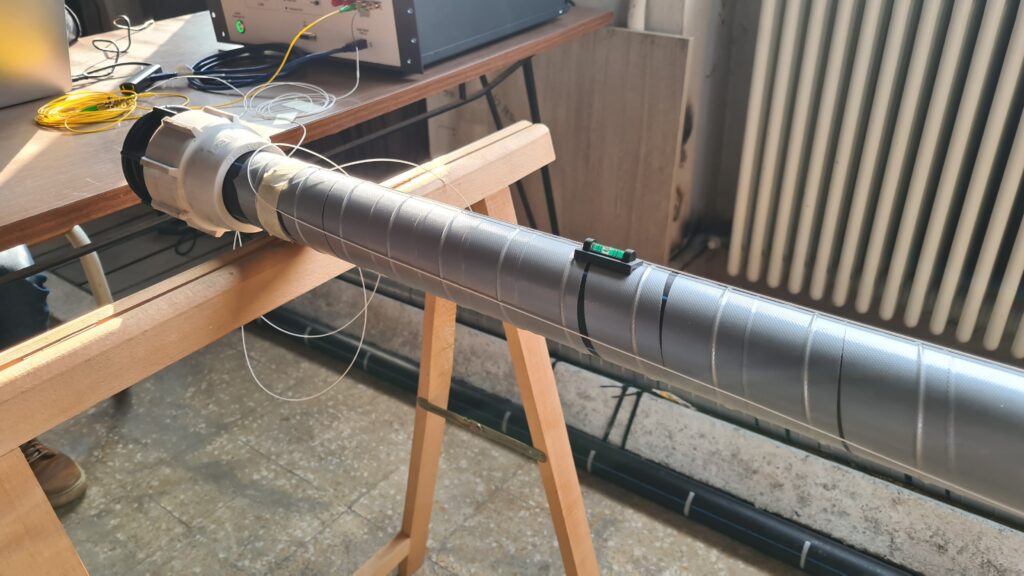
The experiment consisted of two phases. In the first one we assessed the sensitivity of the sensor layout on an HDPE pipe stressed with static pressure. This first stage was successful, so we then concentrated on detecting the pressure anomaly produced by a leak in a piping circuit with flowing water. Overall, the results returned positive feedback on the use of this technology, confirming the possibility of identifying and localising even very small water leaks.
The results we have published are certainly promising for further development of the technology, which will then have to be ‘translated’ into industrial language to produce sensed pipes”.
How do you see yourself in the future? Would you like to continue in this area?
“I really like this field of research and I would like to finalise these results, especially with regard to experiments for the monitoring of embankments. I would certainly like to make it something that can be reproduced on an industrial scale as well, especially as a useful tool for the management of embankments with regard to civil protection procedures”.
